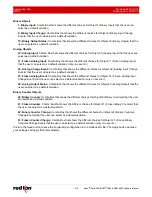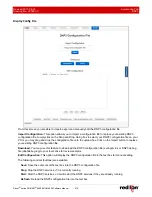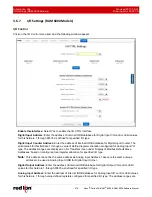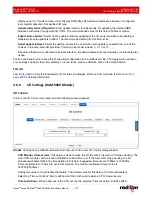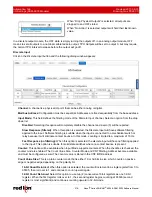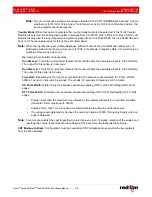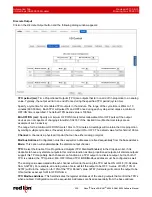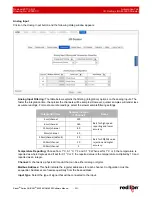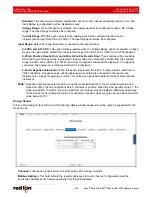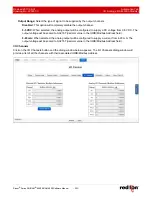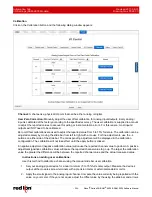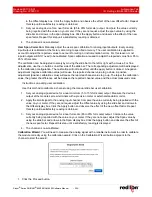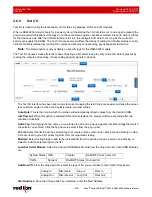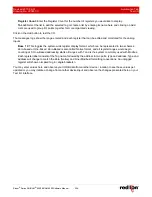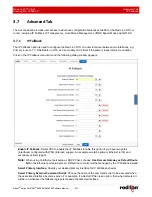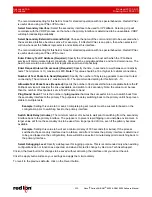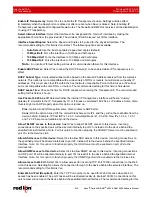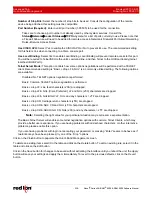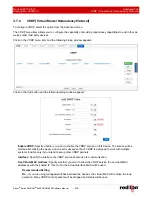
Automation Tab
Revised 2017-08-31
I/O Settings (RAM-9000 Models)
Drawing No. LP0997-C
- 224 -
Sixnet
®
Series SN/RAM
®
6000 & RAM 9000 Software Manual
Calibration
Click on the
Calibration
button and the following dialog window appears:
Channel:
A channel is a physical IO point that can be either analog or digital.
User Zero Correction:
Manually adjust the user offset calibration for analog inputs/outputs. Every analog/
input is calibrated at the factory according to the specified accuracy. The user calibration is supplied to account
to adjust the reported values to account for wiring or instrumentation errors. For this reason, most inputs/
outputs will NOT need to be calibrated.
Zero or Offset calibrations are used to adjust the reported value from 5 to 15% full scale. The calibration can be
adjusted coarsely by moving the slide bar from left to right with a mouse. For fine adjustments, use the -/+
buttons on either side of the slide bar. The corresponding adjustment will be displayed in the calibration
configuration. The calibration will not take effect until the apply button is clicked.
A negative adjustment (negative calibration value) will cause the reported channel value to go down. A positive
adjustment (positive calibration value) will cause the reported channel value to go up. The larger the calibration
value the greater the difference will be between the reported channel value and the actual measured value.
Instructions on adding user calibrations:
Use this method to calibrate a channel using the manual slide bar user calibration.
1. Set your analog signal device for a near minimum (5 to 15% full scale) output. Measure the device’s
output at the module’s screw terminals with a precision meter or external standard monitor.
2. Apply the small signal to the analog input channel. Compare the value currently being reported with the
value on your meter. If they are not equal, adjust the Offset value by the using the slide bar and arrows





